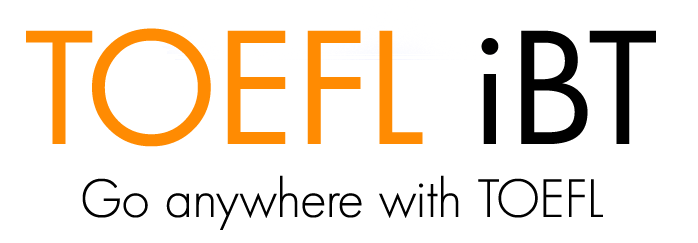The TOEFL iBT® test is given in English and administered via the Internet. There are four sections (listening, reading, speaking, and writing) which take a total of about four and a half hours to complete, including check-in.
Combining All Four Skills: Listening, Reading, Speaking, and Writing
During the test, you are asked to perform tasks that combine more than one skill, such as:
- Read, listen and then speak in response to a question
- Listen and then speak in response to a question
- Read, listen and then write in response to a question
TOEFL iBT Test Sections
| Section | Time Limit | Questions | Tasks |
|---|---|---|---|
| Reading | 60–80 minutes | 36–56 questions | Read 3 or 4 passages from academic texts and answer questions. |
| Listening | 60–90 minutes | 34–51 questions | Listen to lectures, classroom discussions and conversations, then answer questions. |
| Break | 10 minutes | — | — |
| Speaking | 20 minutes | 6 tasks | Express an opinion on a familiar topic; speak based on reading and listening tasks. |
| Writing | 50 minutes | 2 tasks | Write essay responses based on reading and listening tasks; support an opinion in writing. |
The test you take may include extra questions in the Reading or Listening section that do not count toward your score. These are either questions that enable ETS to make test scores comparable across administrations or new questions that help ETS determine how such questions function under actual testing conditions.
Please read the timing instructions for the Reading Section carefully. The instructions will indicate how many passages you will receive and the amount of time you have to respond to questions for those passages. Be sure to pace yourself so that you have time to answer all the questions.
A standard English language (QWERTY) computer keyboard is used for the test. We recommend that you practice typing on a QWERTY keyboard before taking the test.
Native-speaker English Accents
The Listening and Speaking sections of the TOEFL iBT test include other
native-speaker English accents in addition to accents from North America. You may hear accents from the U.K., New Zealand or Australia.
ETS added these accents to better reflect the variety of native English accents you may encounter while studying abroad.
Below are examples similar to what you might hear in the Speaking and Listening sections.
Listening Section
Listen to a talk about the greenhouse effect (MP3). The lecturer is from Great Britain.
Speaking Section
In the Speaking section, only items 1 and 2 of the six tasks may have accented speech. Below are two examples similar to what you might hear. The speakers are from Great Britain. In each instance, the example is 15 seconds long, and you would have 45 seconds to respond.
| Audio File | Transcript |
|---|---|
| Item 1 (MP3) | If friends from another country were going to spend time in your country, what city or place would you suggest they visit? Using details and examples, explain why. |
| Item 2 (MP3) | Some people enjoy taking risks and trying new things. Others are not adventurous; they are cautious and prefer to avoid danger. Which behavior do you think is better? Explain why. |

